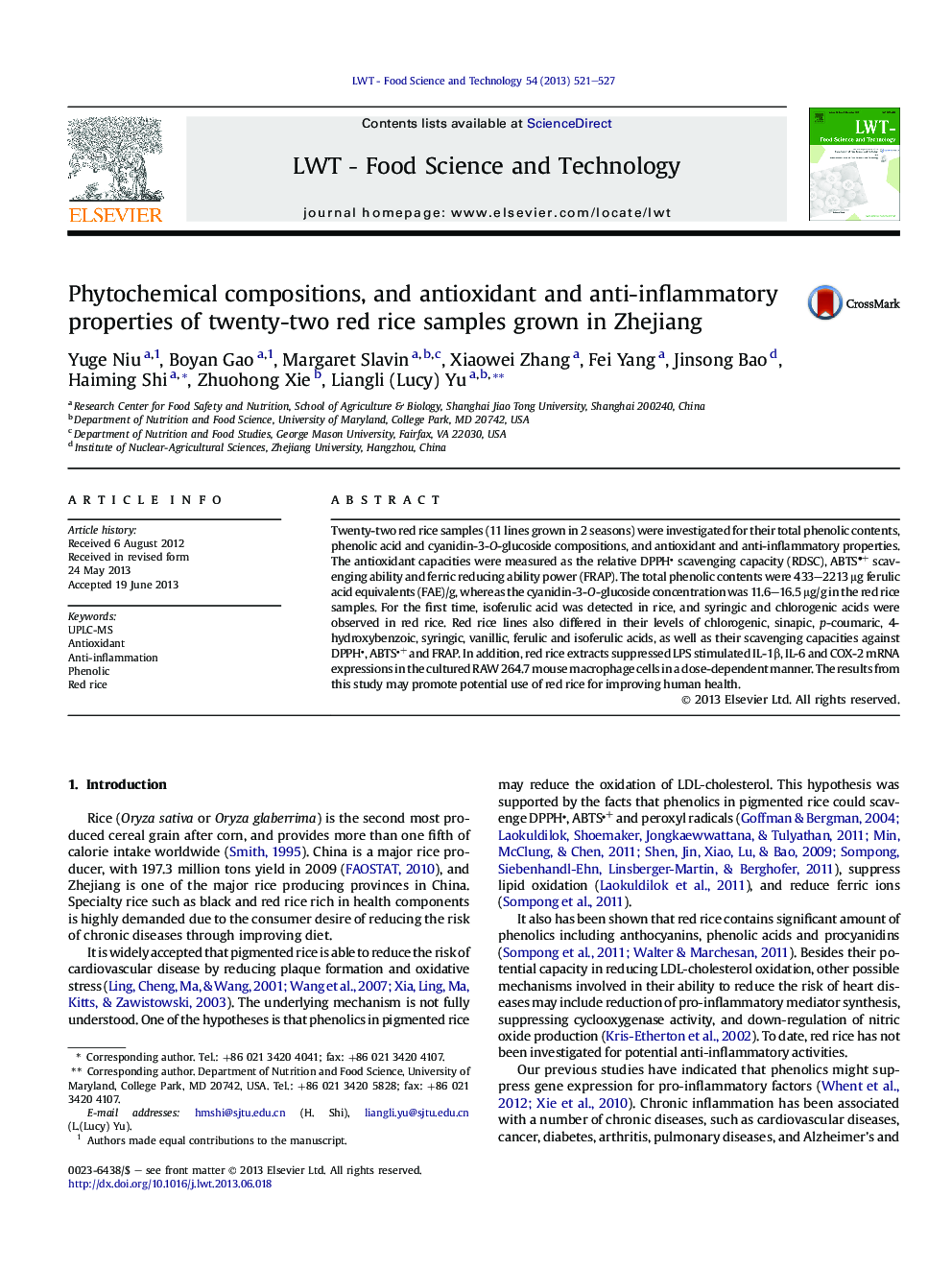| کد مقاله | کد نشریه | سال انتشار | مقاله انگلیسی | نسخه تمام متن |
|---|---|---|---|---|
| 6404617 | 1330906 | 2013 | 7 صفحه PDF | دانلود رایگان |
- Eleven red rice lines in Zhejiang, China were investigated for health components.
- Isoferulic acid in rice and syringic and chlorogenic acids in red rice were first reported.
- Red rice samples showed strong and different antioxidant activities.
- p-coumaric and vanillic acids may be the major antioxidants in red rice.
- Red rice samples had significant anti-inflammatory potential which was first reported.
Twenty-two red rice samples (11 lines grown in 2 seasons) were investigated for their total phenolic contents, phenolic acid and cyanidin-3-O-glucoside compositions, and antioxidant and anti-inflammatory properties. The antioxidant capacities were measured as the relative DPPH scavenging capacity (RDSC), ABTS
- + scavenging ability and ferric reducing ability power (FRAP). The total phenolic contents were 433-2213 μg ferulic acid equivalents (FAE)/g, whereas the cyanidin-3-O-glucoside concentration was 11.6-16.5 μg/g in the red rice samples. For the first time, isoferulic acid was detected in rice, and syringic and chlorogenic acids were observed in red rice. Red rice lines also differed in their levels of chlorogenic, sinapic, p-coumaric, 4-hydroxybenzoic, syringic, vanillic, ferulic and isoferulic acids, as well as their scavenging capacities against DPPH, ABTS+ and FRAP. In addition, red rice extracts suppressed LPS stimulated IL-1β, IL-6 and COX-2 mRNA expressions in the cultured RAW 264.7 mouse macrophage cells in a dose-dependent manner. The results from this study may promote potential use of red rice for improving human health.
Journal: LWT - Food Science and Technology - Volume 54, Issue 2, December 2013, Pages 521-527
